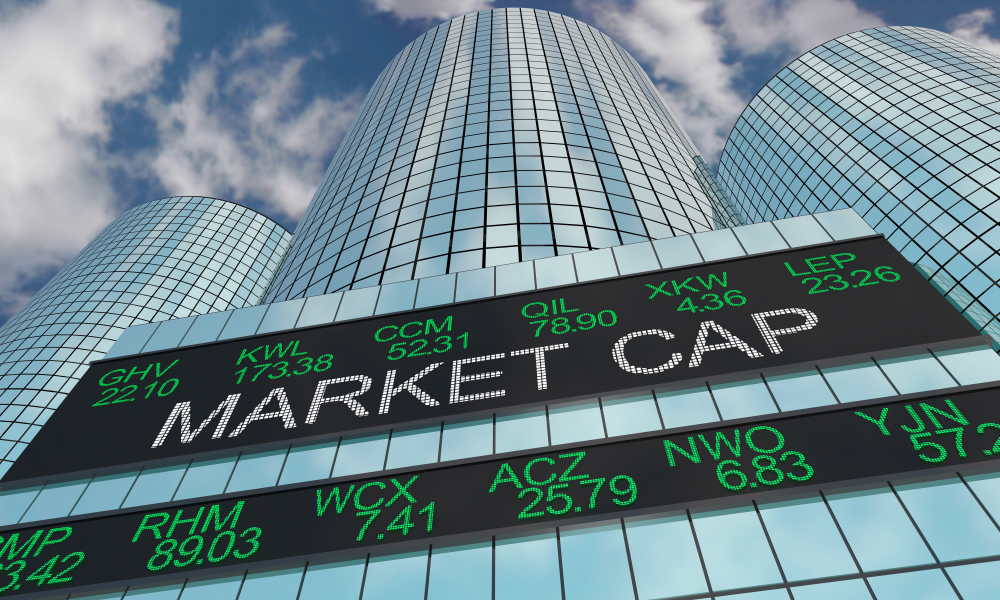There’s something peculiar about this year’s stock market.
Judging solely by the headline numbers, it’s been a pretty good year so far. The S&P 500 Index is up almost 8%, and it’s only mid-May.
That’s great, considering the average market return over the past 20 years is about 9%. So if the market continues its gently upward-sloping trajectory through the remaining seven months of 2023, it will easily outperform that two-decade average return.
Huzzah!
But something seems a bit off.
And you can see it in this visualization of the year-to-date performance of S&P 500 companies, which is provided by Finviz.

Each rectangle in the image is a company in the index, and the size of the rectangle represents the company’s market capitalization.
(With a market cap of more than $2.7 trillion, Apple is the largest company in the world and larger than the entire stock market of Germany!)
The colors of the blocks in the graphic – which range from bright red to gray to bright green – represent performance. Here’s the key…

So if you put the size of the blocks together with the color key, you’ll probably recognize the odd phenomenon I referred to above: A handful of the largest stocks are carrying the entire market.
In fact, the 10 largest stocks in the index accounted for 70% of the S&P 500 Index’s gain through the first three months of 2023 – while the rest contributed about 30%. Put another way, of the 8% gain the S&P 500 has seen this year, the top 10 stocks contributed around 6 percentage points and the other 490 stocks contributed about 2 percentage points.
That makes the current market rally one of the narrowest in recent history. That is, it’s largely dependent on these stocks – nine of the 10 largest in the index:
- Apple (Nasdaq: AAPL)
- Microsoft (Nasdaq: MSFT)
- Amazon (Nasdaq: AMZN)
- Alphabet (Nasdaq: GOOGL) class A shares and Alphabet (Nasdaq: GOOG) class C shares
- Berkshire Hathaway (NYSE: BRK-B)
- Nvidia (Nasdaq: NVDA)
- Tesla (Nasdaq: TSLA)
- Meta Platforms (Nasdaq: META).
If you bet big on these stocks this year, you’re doing a lot better than the broader market. Your return is probably closer to that of the NYSE FANG+ Index, which includes most of these big movers and is up nearly 48% year to date.
Top-Heavy
With so much of this year’s gain concentrated in a handful of stocks, this market is extremely top-heavy. And that makes it vulnerable to collapse.
Keep in mind that the FANG+ index was down about 40% last year when the Federal Reserve’s aggressive rate hiking pushed growth stocks out of fashion.
But the Fed is now on pause and these stocks are soaring once again, so all is great, right?
Not so fast.
Rotations happen all the time in the market – from growth to value, small cap to large, domestic to international and so on.
And despite the fact that the Fed is probably finished hiking rates for a while, and even considering that the companies listed above are excellent long-term investments, they’re expensive based on their price-to-earnings (P/E) ratios.
Each of the stocks above (with the exception of Berkshire Hathaway, which has a wonky P/E ratio due to its unique structure) has a P/E ratio that’s higher than the S&P 500’s ratio of 24. Some of them – including Amazon and Nvidia – are several times more expensive.
So when investors inevitably pull money from more expensive stocks to start looking for bargains again, many of the largest stocks will again fall out of favor.
But don’t abandon these stocks. Just balance them with a mix of smaller value stocks.
At The Oxford Club, we have always emphasized the importance of diversification – across industry groups and asset classes, as well as in company size, growth and value.
From the Club’s Wealth Pyramid:
Asset allocation refers to spreading your investments among different asset classes, not just different securities or market sectors. Because different asset classes are imperfectly correlated – some zig while others zag – our unique asset allocation model allows you to boost returns while reducing your portfolio’s volatility. In layman’s terms, proper asset allocation means you sleep better.
I think that says it all.
